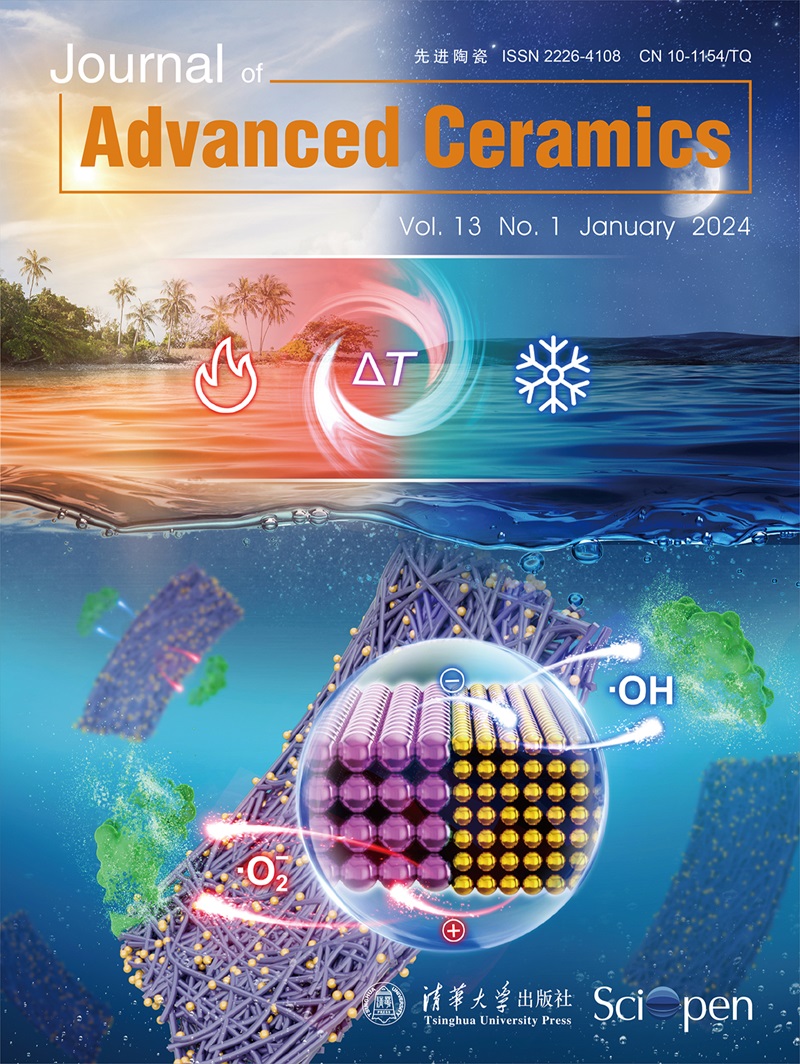In-situ observation and mechanism of calcium–magnesium–alumina–silicates (CMAS) melts-induced degradation of RE 2SiO 5 (RE = Tb, Dy, Ho, Y, Er, Tm, and Yb) ceramics at 1500 °C
IF 16.6
1区 材料科学
Q1 MATERIALS SCIENCE, CERAMICS
引用次数: 0
Abstract
Rare earth (RE) silicate is one of the most promising environmental barrier coatings for silicon-based ceramics in gas turbine engines. However, CMAS corrosion becomes much more serious and is the critical challenge for RE silicate with the increasing operating temperature. Therefore, it is quite urgent to clarify the mechanism of high-temperature CMAS-induced degradation of RE silicate at relatively high temperatures. Herein, the interaction between RE2SiO5 and CMAS up to 1500oC was investigated by a novel high-temperature in-situ observation method. High temperature promotes the growth of the main reaction product (Ca2RE8(SiO4)6O2) fast along [0 0 1] direction, and the precipitation of short and horizontally distributed Ca2RE8(SiO4)6O2 grains was accelerated during the cooling process. The increased temperature increases the solubility of RE elements, decreases the viscosity of CMAS, and thus elevates the corrosion reaction rate, making RE2SiO5 fast interaction with CMAS and less affected by RE element species.钙镁铝硅酸盐(CMAS)熔体在1500℃下诱导re2sio5 (RE = Tb, Dy, Ho, Y, Er, Tm, Yb)陶瓷降解的原位观察及机理
稀土(RE)硅酸盐是燃气涡轮发动机中硅基陶瓷最具发展前景的环境屏障涂层之一。然而,随着使用温度的升高,CMAS腐蚀变得越来越严重,成为稀土硅酸盐面临的关键挑战。因此,阐明高温cmas诱导稀土硅酸盐在相对高温下降解的机理是十分迫切的。本文采用一种新颖的高温原位观测方法,研究了RE2SiO5与CMAS在1500℃温度下的相互作用。高温促进主反应产物Ca2RE8(SiO4)6O2沿[0 0 1]方向快速生长,冷却过程中加速了短而水平分布的Ca2RE8(SiO4)6O2晶粒的析出。升高的温度增加了RE元素的溶解度,降低了CMAS的粘度,从而提高了腐蚀反应速率,使得RE2SiO5与CMAS的相互作用速度快,受RE元素种类的影响较小。
本文章由计算机程序翻译,如有差异,请以英文原文为准。
求助全文
约1分钟内获得全文
求助全文
来源期刊

Journal of Advanced Ceramics
MATERIALS SCIENCE, CERAMICS-
CiteScore
21.00
自引率
10.70%
发文量
290
审稿时长
14 days
期刊介绍:
Journal of Advanced Ceramics is a single-blind peer-reviewed, open access international journal published on behalf of the State Key Laboratory of New Ceramics and Fine Processing (Tsinghua University, China) and the Advanced Ceramics Division of the Chinese Ceramic Society.
Journal of Advanced Ceramics provides a forum for publishing original research papers, rapid communications, and commissioned reviews relating to advanced ceramic materials in the forms of particulates, dense or porous bodies, thin/thick films or coatings and laminated, graded and composite structures.
 求助内容:
求助内容: 应助结果提醒方式:
应助结果提醒方式:


